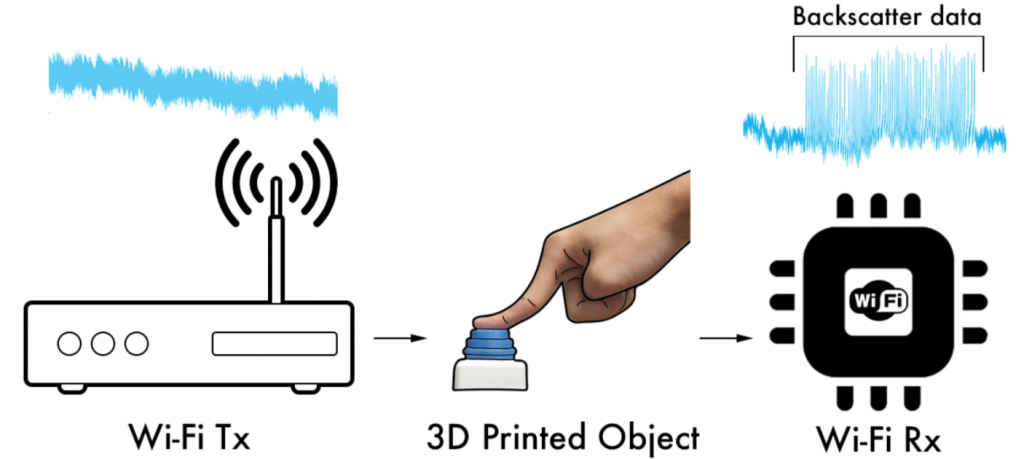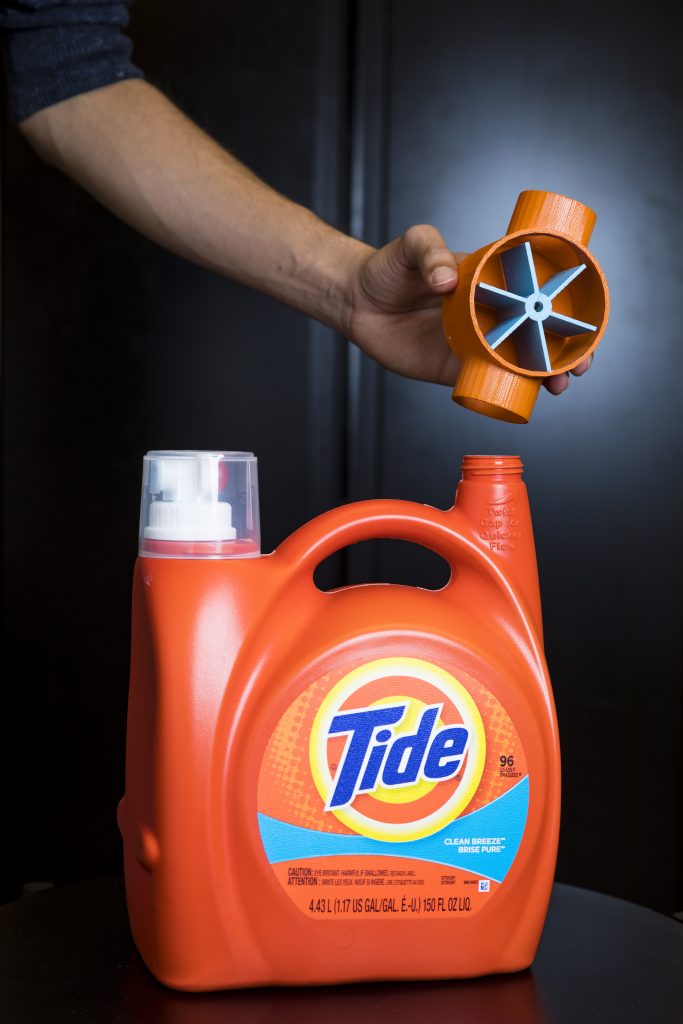Vikram Iyer, Shyam Gollakota and Justin Chan at the University of Washington (UW) have developed a unique concept that could help transform the way we shop, take stock, and even control TV sets. By using 3D printed sensors, the team are creating smarter plastic objects that are capable of wireless communication without the use of batteries, or electronics.
Titled Printed Wi-Fi, the concept has been proven in a recent paper co-authored by Iyer, Gollakota and Chan. In the article, the team demo a range of plastic objects that can be used to control computer screens, relay inventory, and monitor the amount of detergent left in a bottle – all made on a desktop 3D printer, using commercially available filament.
3D printing the unseen
Speaking in an article for UW News Iyer, an electrical engineering doctoral student at the university and co-author of the study, explains, “Our goal was to create something that just comes out of your 3D printer at home and can send useful information to other devices,”
“…the big challenge is how do you communicate wirelessly with Wi-Fi using only plastic? That’s something that no one has been able to do before.”
Plastic objects created by the team are made into active Wi-Fi antennas by 3D printing a conductive strip onto the body, made from a copper-containing plastic filament. The objects are then capable of reflecting signals from a existing Wi-Fi router, to make data which is readable on a mobile phone or other Wi-Fi receiving device.

Backscatter physics
UW’s objects work using backscatter physics – the reflection of waves responsible for radar systems and unusual effects, like floating orbs, in photography. Instead of generating and transmitting its own data, a Wi-Fi active object reflects signals emitted by a router as binary code.
The 1s and 0s of this code are determined by a “hit” or a “miss” on an object’s 3D printed antenna. Reflection of this code is itself controlled by a plastic 3D printed mechanism, that creates interruption in the wave’s path by opening and closing.
3D printed gear and antenna system used to wirelessly control computer scrolling and other features demonstrated in the UW study. Clip via Justin Chan on YouTube
Move over Alexa
In a proof of concept use case, Printed Wi-Fi technology has been used make an attachment for bottles of detergent, like Tide. The device can be used in-conjunction with a mobile phone to automatically order a new product when levels run low, cutting out the middleman for delivery of household goods.

“As you pour detergent out of a Tide bottle, for instance,” explains Gollakota, associate professor in the Paul G. Allen School of Computer Science & Engineering and senior author of the paper, “the speed at which the gears are turning tells you how much soap is flowing out,”
“The interaction between the 3D printed switch and antenna wirelessly transmits that data. Then the receiver can track how much detergent you have left and when it dips below a certain amount, it can automatically send a message to your Amazon app to order more.”
Sensors are getting smarter
Using a similar principle as the UW study, a team at Dartmouth College in New Hampshire invented a device to redirect and control WiFi signals emitted from a wireless router. 3D printed sensors are also undergoing experiments for their potential applications in power generation industries and the development of wearables.
To be the first with latest 3D printing research, subscribe to the 3D Printing Industry newsletter, follow us on Twitter, and like us on Facebook.
Nominations for the second annual 3D Printing Industry Awards are now open. Make your selections for best research team and more here.
Featured image shows UW’s Printed Wi-Fi mechanism. Photo by Mark Stone/University of Washington



